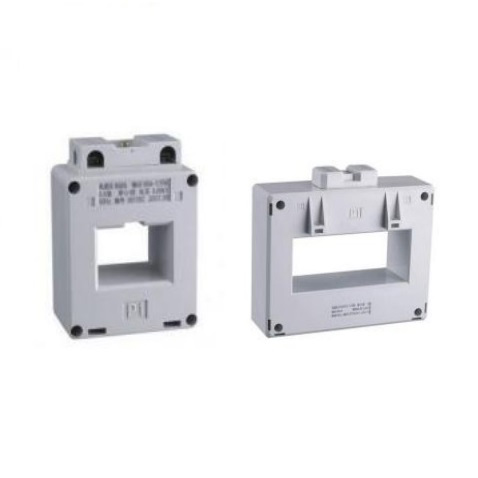Boost BH-0.66 Series CT Accuracy with Nanocrystalline Cores

In the rapidly evolving world of electronics and grid apparatus, miniaturization, precision, and efficiency are the most valuable assets. One of the technological advancements that continues to revolutionize the performance of current transformers in use is the utilization of nanocrystalline cores. Especially for the design of small-sized low-voltage BH-0.66 series current transformers, the integration of a nanocrystalline core for BH-0.66 series devices offers exemplary advantages in magnetic properties and efficiency.
What are Nanocrystalline Cores?
Soft magnetic cores of an iron-based alloy with minor additions of elements like silicon, boron, niobium, and copper form nanocrystalline c-cores. Such alloys are given a rapid solidification processing to achieve a grain structure in the nanometer range, usually less than 50 nanometers. This microstructure characteristic is the reason behind their excellent magnetic properties.
Compared with silicon steel or ferrite, a nanocrystalline core with high permeability and low core loss brings enhanced frequency response and energy efficiency. It is widely applied not only in current transformers but also in nanocrystalline cores for audio transformers, broadband filters, choke coils, toroidal inductors, and even high-frequency transformers.
Function in BH-0.66 Series Current Transformers
BH-0.66 series current transformers are engineered for monitoring and measuring alternating current power supply systems with low voltage. They are applied in protection relays, energy meters, and control panels. The functioning of such CTs largely relies on the nanocrystalline core for precision CTs, which ensures accurate current transformation.
The BH-0.66 series nanocrystalline core has several significant advantages:
1. Better Measurement Accuracy
Low hysteresis loss and high permeability of a nanocrystalline core for precision power supplies provide accurate transformation of currents, even at infinitesimal levels. This results in improved metering accuracy and stability, ideal for energy-efficient systems and smart grid applications.
2. Space Saving and Compact Structure
The high magnetic efficiency of nanocrystalline cores for compact designs enables the use of smaller cores without compromising performance. This supports the miniaturization trend in control panels, hybrid transformers, and planar transformers.
3. Wide Frequency Response
BH-0.66 series CTs equipped with a nanocrystalline core for high-frequency applications offer a broad and stable operation range, well-suited to environments with harmonic distortion. Such versatility also makes them effective for pulse transformers, resonant circuits, and rfi suppression systems.
4. Broad Thermal Stability
A nanocrystalline core with thermal stability ensures consistent performance across fluctuating industrial conditions. Whether in solar inverters, motor drives, or LED drivers, such stability guarantees reliable operation of BH-0.66 CTs.
Applications of Nanocrystalline Core in BH-0.66 Series
The combination of nanocrystalline cores with custom dimensions for BH-0.66 series devices serves a wide range of industrial and commercial applications:
- Energy Metering Systems: Nanocrystalline cores for low-loss transformers improve linearity, reducing billing errors.
- Renewable Energy Systems: Inverters benefit from nanocrystalline cores for solar inverters and DC-DC converters due to their efficiency under varied conditions.
- Industrial Automation: Real-time current measurement supports nanocrystalline cores for motor drives, overload protection, and PFC inductors.
- Smart Grids: As part of nanocrystalline cores for smart grid applications, BH-0.66 CTs ensure accurate real-time monitoring.
Other fields, such as nanocrystalline cores for EMI suppression, magnetic shielding, common mode chokes, and compact chokes, further expand the scope of these materials.
Comparison with Traditional Core Materials
| Feature | Silicon Steel Core | Ferrite Core | Nanocrystalline Core |
| Permeability | Medium | Low | Very High (nanocrystalline core for high-density flux) |
| Core Loss | Moderate | High at low frequencies | Very Low (nanocrystalline core with stable performance) |
| Frequency Range | Limited | High | Wide (nanocrystalline core for high-q inductors) |
| Size for Same Performance | Large | Medium | Small (nanocrystalline core for compact chokes) |
| Cost | Low | Medium | Higher (but offset by long-term savings in energy-efficient systems) |
Although the upfront cost of a nanocrystalline core with epoxy coating may be higher, long-term benefits such as greater efficiency, reduced losses, and compact structure outweigh the investment.
Conclusion
The evolution toward more intelligent, miniaturized, and efficient electric infrastructure calls for nanocrystalline cores. Implementing a nanocrystalline core for the BH-0.66 series current transformers ensures higher accuracy, stability, and durability across demanding environments.
As power distribution networks become increasingly complex, the adoption of nanocrystalline cores for advanced power systems is not just beneficial but essential. For system integrators, engineers, and OEMs looking to future-proof protection and measurement systems, integrating nanocrystalline cores for high-efficiency systems is both technically strategic and visionary.




